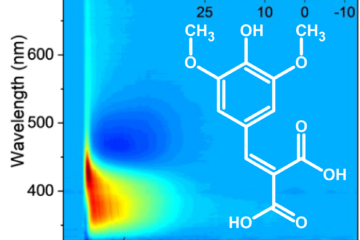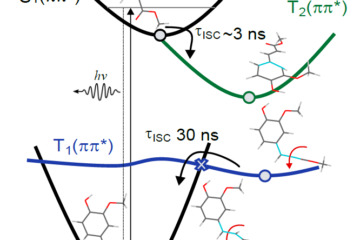Computational simulations unveil trends in the absorption and emission spectra of PPVs.
PPVs [Poly-(p-phenylene vinylene)] are conducting organic polymers, important for the design of LEDs and photovoltaic devices.
In a project led by Thiago Cardozo, from the Federal University of Rio de Janeiro, we studied the absorption and fluorescence spectra of PPV oligomers with up to six phenyl rings.
The spectrum simulations were done with the nuclear ensemble method based on ADC(2) electronic structure. The nuclear ensemble method, which is implemented in Newton-X, allows to simulate absorption and emission spectra including absolute band heights and widths, but at the cost of few hundreds of single-point energy calculations.
To simulate PPV spectra at ab initio level, it’s necessary to deal with the sharp increase of computational cost upon increasing size of the molecules, from shorter to longer oligomers.
For this reason, a careful choice of methods, basis set, number of frozen orbitals and other parameters is required to not jeopardize the description and allow a controlled assessment of errors.
In this work, we devised strategies to use computationally demanding high-level theory and to assess the implications of the approximations used.
- T. M. Cardozo, A. J. A. Aquino, M. Barbatti, I. Borges Jr., and H. Lischka, Absorption and Fluorescence Spectra of Poly-(p-phenylene vinylene) (PPV) oligomers: An Ab Initio Simulation, J. Phys. Chem. A, doi:10.1021/jp508512s (2014).



